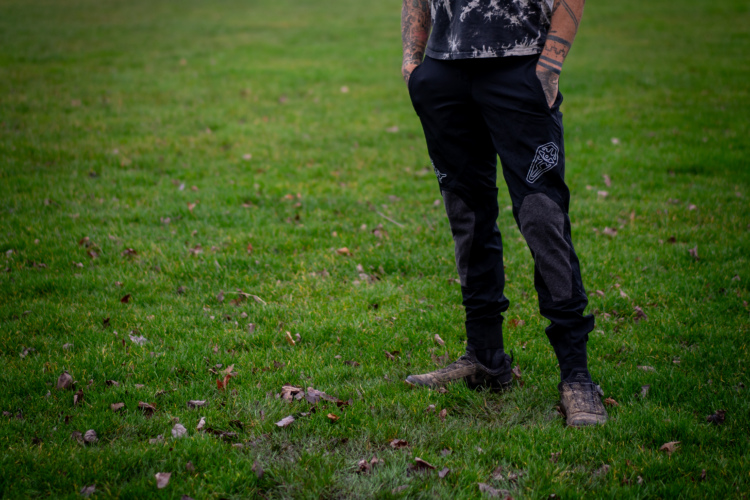
Let’s face it: hydration pack bladders — AKA reservoirs — can get pretty nasty after a while. If you’ve started noticing dark spots on your hydration pack reservoir or along the tubing, I hate to break it to you, but you have (or had) a mold problem. Stop drinking from that funky bladder and follow these tips to get your reservoir back into pristine condition!
Prevention
Before I get to tips for cleaning a hydration bladder, it’s important to understand how bladders actually get infected. Perhaps the most common cause of mold in a hydration reservoir is residual sugar from sports drinks. Mold loves to chow down on sugars, and any liquid you put into your reservoir seeps into every nook, cranny, hose, connector, and valve. If you stick to just water in your pack, your bladder is far less likely to get funky in the first place. Drink tablets from companies like Gu, Nuun, and even Camelbak are mostly sugar-free, so use these if you want something other than water on the trail.
Mold also thrives in warm conditions, so riders aren’t doing themselves any favors by leaving packs in hot cars for days on end. Just remember: after the ride, bring it inside! In my experience, heat also brings out more of the plastic-y taste from the reservoir, which is not pleasant and probably not good for the body either. Some riders, including our own Greg Heil, have had success storing hydration bladders in the freezer when not in use in order to eliminate bacteria growth.

Finally, mold and bacteria generally need water to thrive, so washing with soap AND drying a hydration bladder after each use is important.
How to dry your hydration bladder
Washing isn’t too difficult, but few of us have the patience to dry every little part of a hydration system. There are, however, a few methods you can use to make the process slightly less maddening:
- Camelbak makes an official reservoir dryer, which is designed for hanging a clean bladder out to dry. Riders also report using modified coat hangers to accomplish the same thing.
- Some bladders, like the ones from Hydrapak, have a huge opening on one end, which makes it possible to basically turn the bladder inside out to dry. Once inside out, use a paper towel to wipe any residual moisture, or hang up to air dry.
- Take it apart! Remove the hose and bite valve if possible and dry each part individually. With the bladder disassembled, you can use this method from UtahMountainBiking.com that involves threading a derailleur cable and paper towel through the hose.
- A few years ago a company was selling an electric fan that could be attached to a Camelbak reservoir for drying purposes. I actually tested one and found it to be really loud and basically ineffective, despite hours of use.
Get the funk out: Cleaning your hydration bladder

So, you’ve failed at the prevention bit, and your hydration reservoir is all funked up. Here are some tips for reservoir mold abatement:
- Invest in a brush kit. Again, Camelbak sells a kit tailor-made for the job, which includes a small, snaking brush for the hose and a larger, angled brush for cleaning the reservoir itself. Use the brushes to dislodge mold and gunk, keeping in mind that you might have to scrub pretty hard.
- Drop in some Camelbak Cleaning Tabs. The tabs contain Chlorine Dioxide, and some riders have reported that bleach and baking soda work just as well. The Camelbak tablets are said to work in just 5 minutes, making for a potentially quick and easy solution.
- Don’t attempt to sterilize your hydration bladder with boiling water or in a microwave. This might be tempting, but there’s the possibility that parts of the bladder could melt, or toxic chemicals might be released from the bladder material.
Still seeing mold spots? Camelbak’s website seems to suggest it’s not a problem:
If there are still spots left behind, these are permanent mold stains that may not be removable. However, your reservoir is still safe and usable after you’ve cleaned it.
Personally, I’m not a fan of having my water flow over mold stains on its way to my lips, even if they are just stains and not actual mold. Fortunately, if just one portion of the reservoir system–say, the hose or bite valve–is stained, there are often replacement parts available. It’s also possible to purchase a new bladder without having to buy a new pack and you can even put, say, a Nalgene reservoir in a Camelbak pack.
Moldy hydration systems have plagued mountain bikers ever since the first bladder rolled onto the trail, so don’t feel bad if yours goes foul. Just follow these tips for cleaning and maintaining your system, and you’ll enjoy years of use out of your reservoir!
Your turn: What tips do you have for cleaning or maintaining your hydration pack reservoir?




















11 Comments
Aug 23, 2018
Aug 20, 2018
Pouring some (1-2 cups) of water in the reservoir before putting it in the freezer helps keep your water cool on hot summer rides. I store the bag on its non-hose side to keep the ice from freezing the port shut.
Star San, or other beer brew sanitizers, make good non-toxic reservoir cleaners.
Aug 26, 2016
Aug 26, 2016
Aug 19, 2018
Aug 23, 2016
Aug 25, 2016
Aug 24, 2016
Aug 23, 2016
Aug 24, 2016
Aug 21, 2018